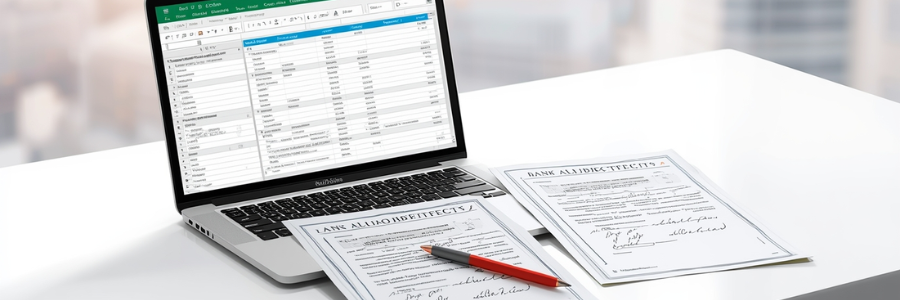Linking Export Payment Code with Bank AD Code for Easy Transactions
Overview
Export payment processing is a comprehensive procedure in which the whole process of foreign exchange transactions is highlighted. It starts from obtaining the payment for exporting goods or services to converting it into local currency (Indian rupees). Furthermore, the foreign exchange supply chain in India is managed by the Reserve Bank of India (RBI). Accurate export payment processing management is essential to the Export Data Processing and Monitoring System (EDPMS). This is because the submitted data is reported to RBI via EDPMS. The whole process is done through the AD (Authorized Dealer). Let’s explore the page to know how the AD code registration ensures smooth and compliant foreign remittances. Read more in the next sections.
1. Understanding Export Payment Code
In the international markets, the export payment code, also known as ‘Purpose Code,’ plays a vital role. Indian banks usually use the P0102 for determining foreign currency payments to exporters. Then, the export payment code is reported to the RBI by banks, which is crucial for tracking and verifying foreign exchange transactions.
2. What is the Function of the Export Payment Code?
The purpose code is used for multiple reasons. The major function it offers:
- Tracks and Verifies: The code is based on the tracking mechanism. The purpose codes give access to regulators for verifying that the foreign currency is credited from a legally recognized channel.
- Compliance with the governing body: By using the right export payment code, the exporters can align with the FEMA Act’s rules and regulations. It simplifies the foreign exchange management process, which allows for managing the inflow and outflow.
- Foreign Payment Classification: The code is used to classify the type of payment. It determines the purpose of the payment. It generally categorizes the international payments, such as goods, services, or investments.
- Protects from Fraud: By complying with regulations and issuing the right purpose code, the banks prevent exporters from illicit activities.
3. The Issuing Authority of the Purpose Code
The purpose code helps the RB to track the foreign exchange flows. It classifies the type of payment received by exporters for selling goods or services. On the other hand, the Reserve Bank of India (RBI) is responsible for issuing the export payment code. The code is applicable for both inward and outward. The code acts as the classification or label for the RBI to understand the payment transfer reason.
For example, the RBI tags the foreign transfer of money purpose on whether it is for goods export or software services.
4. Why Linking Export Payment Code with AD Code Is Crucial?
In the international export world, the AD code is the identifier for exporters. When an AD code links to an export purpose code, it simplifies the export procedure. The authorized code linking with the export payment code is vital for many reasons:
|
Reasons |
Explanation |
|
Customs Approval |
AD code registration for export is a vital process for shipping bill filing. The document is essential for clearing the goods from ports. During this process, the export payment code and AD code work together. |
|
Claim Government Incentives |
By adhering to rules and regulations, the exporters can avail themselves of government benefits, such as duty drawback, GST refunds, and many more. The accurate linking to the bank makes the direct fund credit to the designated exporter’s bank. |
|
Foreign Exchange Management |
The AD code and purpose code give access to the RBI for monitoring the foreign transaction inflow and outflow. It is necessary for economic stability and the avoidance of financial anomalies. |
|
Adherence to Regulatory |
Adherence to the Foreign Exchange Management Act (FEMA) is necessary for non-compliance issues. The proper linkage allows export transactions to be more transparent and within foreign exchange regulations. |
|
Prevention of Fraud and Risks |
The linking of the payment code with the AD code creates transparent and traceable records. All data is stored in RBI, which directly reduces the fraud risk and money laundering. |
|
Simplify Shipment Process |
The AD code registration at customs simplifies the overall export process. This is because the AD code connects to the exporter’s bank account, customs authority, and other regulatory departments. |
5. The Linking Process: Step-by-Step Overview
Before linking the export payment code to an AD code, the exporters must first obtain the authorized dealer code from their current bank. Here is the step-by-step guide for linking an exporter bank code to foreign remittance transactions:
Step 1: The exporter is required to first contact their bank where their current account is. Ask the bank manager for the AD code and provide supporting documentation.
Step 2: Once the request is approved and other formalities are completed, the authorized dealer code letter will be given to the relevant bank on bank letterhead.
Step 3: AD code registration on ICEGATE is mandatory, as it allows for shipping bill filing. To navigate the ICEGATE portal, fill out all the supported documents and other details.
Step 4: When the AD code has been connected to ICEGATE, the exporter can obtain all the information, such as commercial invoice details, the buyer details, and shipment details.
Step 5: The bank shall notify the link remittance to the P0102 purpose code once the bank has received an international payment credit from the foreign buyer.
Step 6: The bank will notify the Reserve Bank of India through the EDPMS portal.
Step 7: This is the last step, where the bank will issue an eFIRC and e-BRC certificate. It determines the final export payment transactions.
6. Compliance and Document Tips
For the smooth export payments through the AD Code, the exporters need to provide multiple documents to their bank. The major documents required are the IEC certificate (Import-Export Code), PAN card of the company, GST registration, cancelled cheque, authorized signatory’s identity, and address proof. The major compliance requirements are:
- The requirements of banks and specific ports change with new regulations. Before applying for the AD code, ensure the exact list of requirements.
- Must securely keep the soft copies in an accurate format of all supported documents. This is because most of the banks ask for sealed and signed documents.
- Once you get registered, your AD code will be on the ICEGATE portal. It is important to link the bank account to foreign remittances.
- Must obtain the Class 3 DSC (Digital Signature Certificate). It is required to digitally sign the additional documents during any queries on the ICEGATE portal.
7. Sum Up | Link Export Payment Code with AD Code
AD code registration allows businesses to deal in foreign exchange. When the AD code links to the Export Payment Code, the RBI gets access to monitor the flow of foreign currency. The management of foreign currency supply is important to manage economic stability. The businesses can manage the export payments through the AD code. Avoid the shipment delay and apply for AD code with LegalRaasta experts’ assistance. Visit the LegalRaasta.com website for more details.
8. Frequently Asked Questions Related to AD Code & Export Payment Code
(a) Why is AD code registration important?
Ans. AD code registration at customs is a compulsory requirement for getting the customs clearance, regulatory compliance, and smooth international trade.
(b) What is the function of export code?
Ans. The Import-Export Code (IEC) is used to identify the exporter. This 10-digit business identification code applies to all export and import activities.
(c) Can you apply for the AD code without an IEC number?
Ans. No, you will not be able to register for an AD code without the Import Export Code (IEC).
(d) Is AD code required for importing raw goods?
Ans. Yes, obtaining the AD (Authorized Dealer) code is crucial for importing the raw goods from another country to India.
(e) Who is not eligible for the purpose code?
Ans. The eligibility depends on India’s foreign exchange regulations. In addition, under the Liberalized Remittance Scheme (LRS), the restricted entities are corporates, partnership firms, Hindu Undivided Families, and trusts.
:
.
:
.









